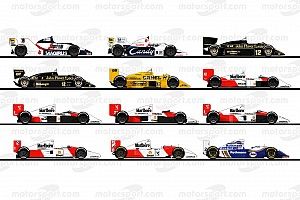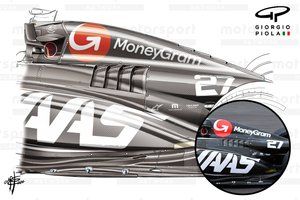
Photo by: XPB Images
After a spectacular Singapore GP, the FIA Formula One World Championship stays in the Far East for the next round of the 20-event series. The ever-popular Japanese Grand Prix takes place this weekend at the Suzuka circuit and will be followed one week later by the Korean race for the second double header after the summer break.
Spa and Monza may have a greater percentage of the lap spent at full throttle, but the combination of corners, the relentless flow through the high speed sections and radial turns, esses and hairpins makes Suzuka one of the toughest challenges of the year for F1 engines.
Japanese Grand Prix facts and figures
Suzuka is above average in terms of power sensitivity, not quite in the top five but not far off. There are long portions of the track where the throttle will be fully open with the engine running at close to maximum revs, for example the 130R corner, a curved straight 1,250m in length that stretches from the exit of turn 14 to the chicane leading onto the pit straight. Drivers will reach nearly 320kph during this section.
The high speed Esses are similar in profile to the Maggotts and Becketts complex at Silverstone; a flowing sequence of interlinking turns that sees the car change direction rapidly at very high speed. This section is also combined with appreciable changes in pitch. The driver will enter turn three, the start of the Esses, at approximately 245kph and carry the speed through until the exit of the complex. Approximately 15secs is spent in fourth or fifth gear during this section.
The high speed changes of direction through the Esses subject the internals of the engine and lubricant systems to high lateral G-forces. The fuel and oil can be squashed to one side of the tank away from the collectors, so engineers must regularly check levels.
As much as Suzuka is famed for high speed corners, the slower sections also require careful preparation. Turn 11, the hairpin, is taken at approximately 65kph and the challenge here is to give the driver the necessary torque response when required. To do this engineers work on the transition from four to eight cylinders, injecting fuel at precisely the right time to meet the torque demand. If the torque delivery is correct then it can help the driver avoid wheelspin when the grip is low, particularly if the track is wet.
Suzuka is prone to changeable weather, particularly at this point in the year when typhoons can lash the Far East. Changeable wind directions can play havoc with ratio selection. A tailwind will result in extended periods at the limiter, a headwind a poor top speed — both could potentially leave the driver as a sitting target down the straights. Any predicted change in wind direction between qualifying and the race will make this selection even more difficult.
The undulation of the circuit can also affect gear ratio selection. Although it is not a major problem, the acceleration on a stretch of tarmac that is climbing or descending will be quite different. This can affect the timing of the shift lights.
Kimi Raikkonen, Lotus F1 Team
There is every type of corner on the Suzuka circuit and getting together a perfect lap is quite tough as you need to be very precise in every single turn, very close to the limit. Getting the correct level of stability into the corners and then engine response out of them really helps so we can concentrate on getting the right lines. It also helps to take advantage of any overtaking opportunity that might appear during the race — there are lots of overtaking opportunities so you need to be ready. Suzuka is a circuit I look forward to going to for these reasons and in 2005 I had one of my best wins there.
Rémi Taffin, Renault Sport F1 head of track operations
Suzuka is a hard track for the chassis and engine teams. The power sensitivity is not higher than say Canada or Valencia, but the variety of corners over the 5.807km lap requires some careful preparation. The first half of the circuit, from the First Curve to Spoon Curve, is flowing so the engine needs to be responsive and smooth throughout the power curve. The second half of the track, from the exit of Spoon to the end of the pit straight, is all about outright power with 90% of this section spent at full throttle. It’s a challenge, particularly as this point in the year when we are going into the back to back races, but one we are looking forward to, especially with the championship at this critical stage.
Source: Renault Sport
Be part of Motorsport community
Join the conversationShare Or Save This Story
Subscribe and access Motorsport.com with your ad-blocker.
From Formula 1 to MotoGP we report straight from the paddock because we love our sport, just like you. In order to keep delivering our expert journalism, our website uses advertising. Still, we want to give you the opportunity to enjoy an ad-free and tracker-free website and to continue using your adblocker.




















Top Comments